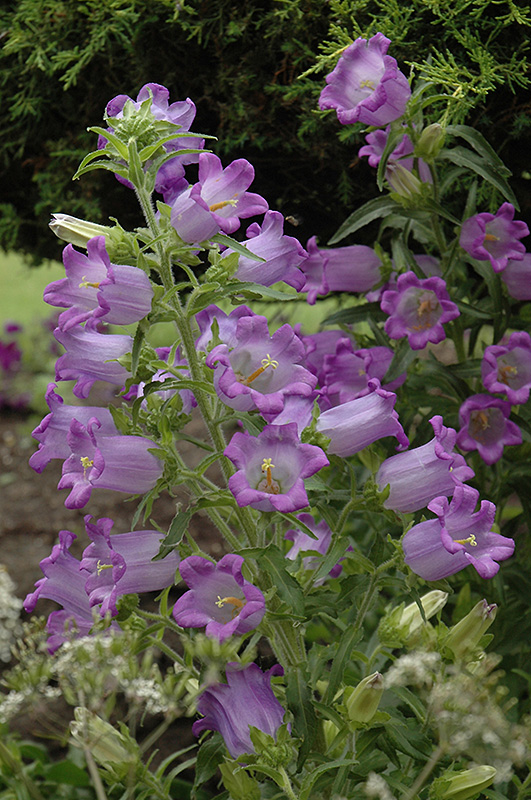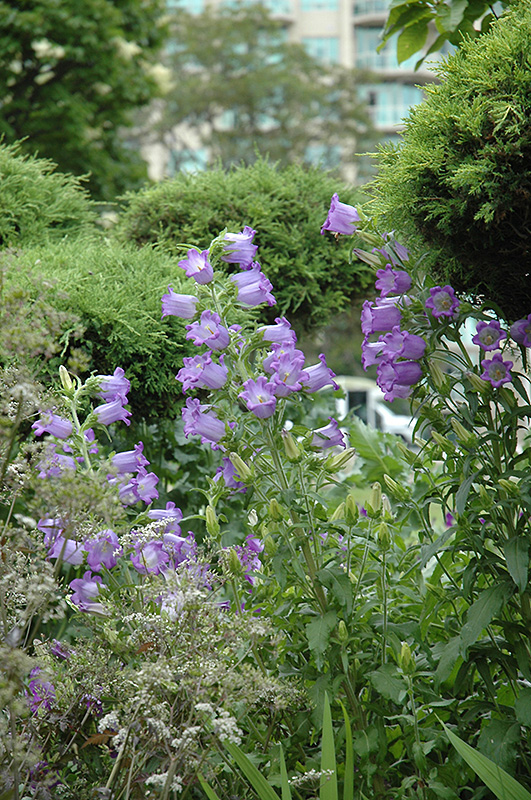Height: 30 inches
Spread: 24 inches
Sunlight:
![]()
![]()
Hardiness Zone: 4
Description:
Dainty spikes of large bells that emerge in tones of blue purple ahd pink, rising above attractive bright green, narrow, strappy leaves; a great accent for the garden and breathtaking in masses
Ornamental Features
Canterbury Bells features delicate spikes of sky blue bell-shaped flowers with purple overtones rising above the foliage from late spring to mid summer. The flowers are excellent for cutting. Its narrow leaves remain emerald green in colour throughout the season.
Landscape Attributes
Canterbury Bells is an herbaceous biennial with tall flower stalks held atop a low mound of foliage. Its relatively fine texture sets it apart from other garden plants with less refined foliage.
This plant will require occasional maintenance and upkeep, and is best cleaned up in early spring before it resumes active growth for the season. Gardeners should be aware of the following characteristic(s) that may warrant special consideration;
- Self-Seeding
Canterbury Bells is recommended for the following landscape applications;
- Mass Planting
- General Garden Use
- Container Planting
Planting & Growing
Canterbury Bells will grow to be about 30 inches tall at maturity, with a spread of 24 inches. It grows at a fast rate, and tends to be biennial, meaning that it puts on vegetative growth the first year, flowers the second, and then dies. However, this species tends to self-seed and will thereby endure for years in the garden if allowed.
This plant does best in full sun to partial shade. It prefers to grow in average to moist conditions, and shouldn't be allowed to dry out. It is not particular as to soil type or pH. It is highly tolerant of urban pollution and will even thrive in inner city environments. This species is not originally from North America. It can be propagated by division.
Canterbury Bells is a fine choice for the garden, but it is also a good selection for planting in outdoor pots and containers. With its upright habit of growth, it is best suited for use as a 'thriller' in the 'spiller-thriller-filler' container combination; plant it near the center of the pot, surrounded by smaller plants and those that spill over the edges. It is even sizeable enough that it can be grown alone in a suitable container. Note that when growing plants in outdoor containers and baskets, they may require more frequent waterings than they would in the yard or garden.


